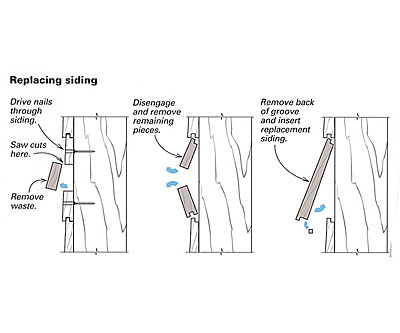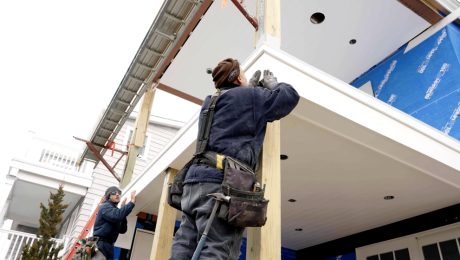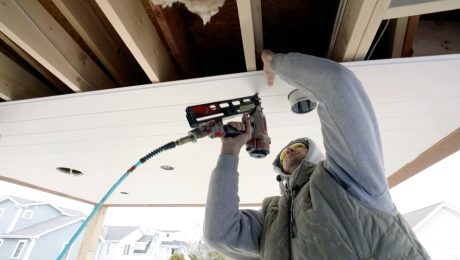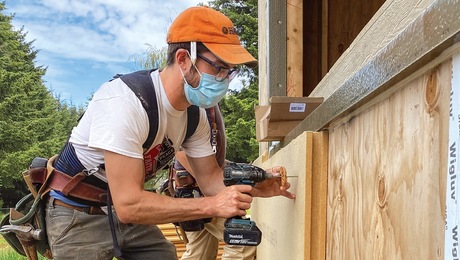Q:
Our 90-year-old balloon-frame house has 3/4-in. interlocking bevel siding with a tongue on the top of each board fitting into a groove on the bottom of the board above. I need to replace a couple of individual boards and want to know where to look for this type of siding and how to splice in the new boards.
Todd Stine, Seattle, WA
A:
Former associate editor Roe A. Osborn replies: Siding manufacturers can make custom siding to match what you have on your house, but they usually require a minimum order of a few hundred square feet. Because you probably need to replace only a few pieces of siding, the cost of following this route would be prohibitive. Instead, I recommend bringing a small sample of siding to some of Seattle’s older lumber companies. One of them is bound to have handled your siding, and with any luck they still might have a few lengths sitting on a rack somewhere.
When replacing an individual piece of siding, you need to determine how much of the board you want to replace. There are a number of factors to consider. First, of course, is the extent of the defect (the rot or the check) in the board. I always try to go beyond the visible defect by at least one stud bay. The next consideration is the neighboring butt joints in the field. Never create a joint directly above or below from the neighboring siding before I pull them out. Otherwise I risk damaging the siding that’s staying on the house.
Replacing a board is easier if I don’t have to create new butt joints, so if the defect in the wood ends just a few feet from a joint, I’m inclined to take out the entire board. If I need to cut the board to create a joint, I begin by driving any nails in the piece of siding I’m removing (including the joint area) through with a nail set (see drawing). Next, I scribe the cutline by running a utility knife along the blade of a combination square. I cut through the board with a circular saw set at a shallow depth, taking care to avoid damaging the adjacent siding. I finish the cut with the utility knife or with a fine-toothed handsaw. Then I cut out a lengthwise strip about 1/2 in. wide from the center of the piece of siding I’m removing. With that strip taken out, I should be able to pull the top waste section down and out of the groove above and the bottom waste section up and off the tongue below. I make sure the waste pieces are free from the neighboring siding before I pull them out. Otherwise I risk damaging the siding that’s staying on the house.
I cut the replacement siding to length, and I rip off the backside of the groove on the bottom. I slide the replacement board up into the groove above and let the bottom lap over the board below. Finally, I fasten the replacement board at every stud and caulk the butt joints before applying a finish.


























